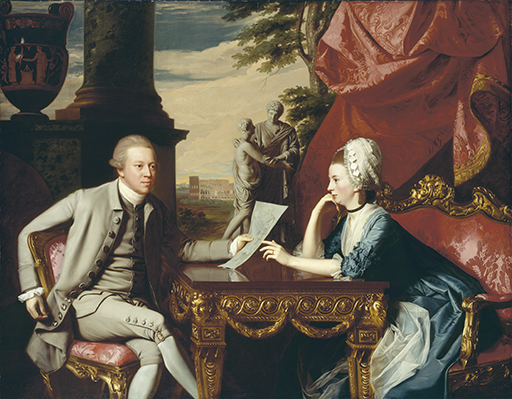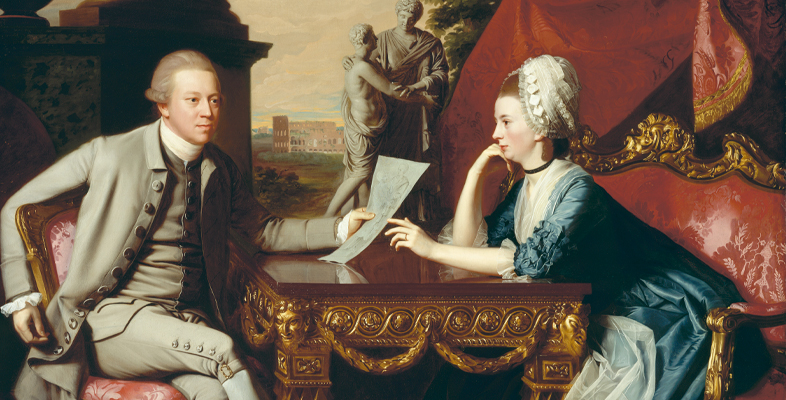2.4 The Grand Tour portrait: couples
The Grand Tour has sometimes been seen as a journey made only by elite young men. In fact, the reality was that women and families also toured the principal Italian sites, as did people travelling later in life, and a range of non-aristocratic artists and writers. You’re now going to examine two portraits which can help us shed light on the meanings ancient places carried for women and families, starting by looking at a portrait of a married couple. Unusually, this depicts tourists from elsewhere in the North Atlantic world, from Carolina, in what became the USA.
Activity 6
The American painter John Singleton Copley (1738–1815) exhibited his double portrait, now known as Mr & Mrs Ralph Izard (Alice Delancey), of the successful merchant Ralph Izard and his wife while they were on the Grand Tour together (Figure 10). It is thought to be the work Copley exhibited at London’s Royal Academy in 1776 when it was called A Conversation.

Spend a few moments jotting down why you think the earlier title was chosen. Who might be having the conversation with whom and what might it be about?
Discussion
Of course we cannot know what the sitters might be intended to be conversing about, but we can take some clues from their depiction and the objects that surround them. The Izards are posed on either side of a table and Alice gestures towards the drawing Ralph holds, her gaze directed towards him, while he looks outwards beyond her. The Colosseum is centre stage in the distance, while behind Ralph an enormous Greek red-figure pot is placed beside a column, and between the couple is a statue. The inclusion of these buildings and objects suggests these might be central not only to the couple’s relationship, but part of ‘a conversation’ with the viewer, too.
Copley and the Izards had travelled together to southern Italy, visiting the sites at Pompeii and Herculaneum before returning to Rome. On the one hand this Grand Tour portrait is intended to demonstrate their wealth and discriminating taste; put simply, the Grand Tour offered opportunities for the collection not only of ancient objects but also of contemporary objects in the new style of neo-classicism. The table the Izards are depicted seated at is designed in this style, which the Adam brothers were to make so desirable; details such as the circular motifs (called anthemions) and the rams heads are taken from classical architecture. However, like the other portraits you have looked at, this picture also contains personal messages unique to the sitters. The paper Ralph holds is a sketch thought to be by Alice (since she gestures towards it), which represents the sculpture, often identified as Orestes and Electra (two characters from Greek mythology), which is placed in the centre of the painting. The Izards are therefore portraying the shared act of classical education, viewing treasures of Roman and Greek art and architecture, but also (in the case of Alice) learning by copying them.
